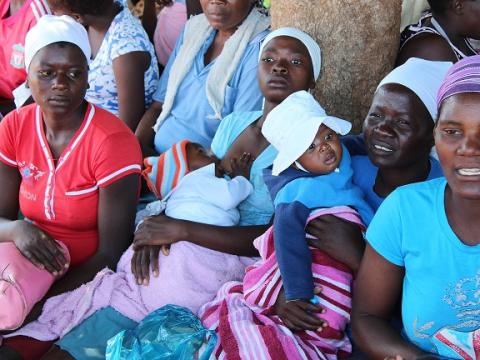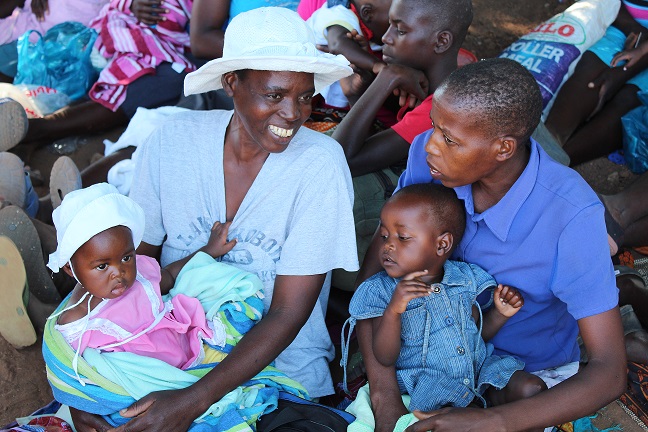Food packs provide immediate relief in Zimbabwe

Over half of Zimbabwe’s population will face food shortages by March 2017 according to the World Food Programme (WFP). As the country deals with one of its worst droughts in over 35 years, World Vision and its partners are pulling resources to urgently respond to immediate food needs of families as well as improve resilience.
School dropouts, single and reduced meal sizes in a day, depleted drinking water sources, wilting crops and dying livestock were the prevailing condition since October and April 2016 across the country. The devastating impact of El Nino took communities by surprise. It also pushed development partners to adopt emergency measures to help alleviate hunger.
World Vision immediately responded to the need in its project areas in Mangwe District of Matabeleland South through distribution of food packs to the worst affected families, livestock support, and extended support to irrigation and gardening projects.
Covering nine wards with a population of over 48,000 villagers, World Vision’s food packs were distributed on a monthly basis with the benefiting families ranging from 4 to 12 members receiving 12.5kg of mealie meal, 2kg of sugar beans and 750ml of vegetable oil each following WFP standard. The food distribution program runs until September 2016.
One of the beneficiaries 44-year old Sehliselo Sibanda, says, “I am so thankful to World Vision for the house and the monthly food packs. I have a family of eight. My husband left for South Africa over seven years ago and stopped supporting us. Towards the end of 2015, I left my four sons because I do not have the means to look after them. World Vision intervened and reunited us.”
Selection of the beneficiaries for the food assistance were based on vulnerability, levels of resilience and number of meals consumed per day. From the assessment done, many of the beneficiaries chosen either have a single meal per day or a meal over two days.
To best mitigate the devastating effects of the recurrent drought on livestock in the dry prone Mangwe District, World Vision provided assistance to farmers with livestock and develop it into a viable income-generating project. It can also improve pastoral food and water security. World Vision is currently serving 300 farmers with 3 000 cattle.
A solar powered borehole is currently being drilled to provide improved source of water for the livestock. Over 300 livestock deaths were recorded in the Mangwe District with cattle prices dropping as low as US$50 that previously costs as much as US$700.
Gardening remains a viable livelihood option for several communities with World Vision supporting four nutrition gardens and an irrigation project with inputs, fencing, improved water storage and reticulation systems. To further improve farming skills, a program is being explored with an agricultural company to help build capacity and improve crop production in the communities.
Zimbabwe was among the hardest-hit by El Nino in Southern Africa with close to 3 million people affected. World Vision is providing relief assistance to over 500,000 people with various initiatives including food packs distribution in partnership with WFP.
